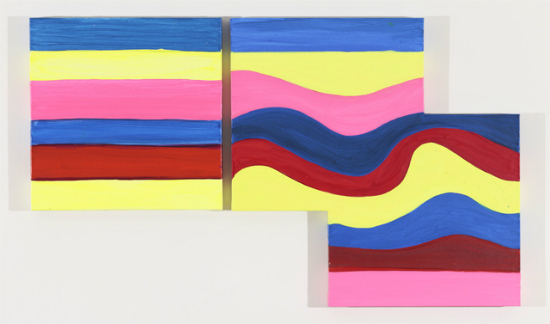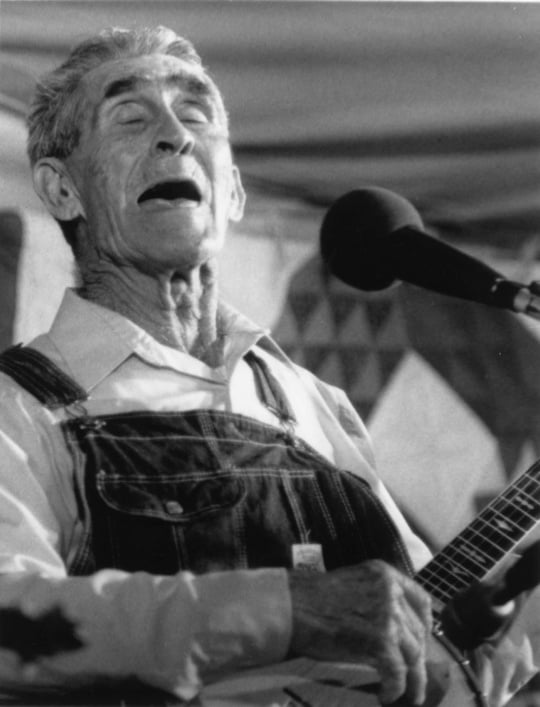
While paintings or sculptures might be compared to any number of things, few would think to compare such physically static objects to the dynamic, flowing form of a waterfall. As American philosopher Susanne Langer argues, however, the comparison is quite apt.
For example, neither the flowing water nor the ridge it goes over is the waterfall itself, which exists only as a relation of the two components. Similarly, neither a collection of brushstrokes nor a surface constitutes a painting in its fullness of intensity—rather, the experience generated by the painting comes only from the relation of both elements. Another, more direct, resemblance arises from how the form of a waterfall maintains the same shape over long periods of time—Cumberland Falls looks like the same waterfall year after year—even as it is in a state of constant, second-by-second flow and change. By analogy, although the material of a sculpture or painting is a stable and persisting form, the experiences or ideas it triggers can convey an intensely dynamic flow of shifting associations and meanings. Like a waterfall, a work of art is a strange integration of stable form and flowing change.
Langer (1895-1985) studied at Harvard and Radcliffe, and received her PhD in philosophy in 1926. Though her primary advisor in school had said little about art, Langer would spend the next 50 years considering the topic from a series of philosophical vantage points while teaching such future luminaries as Arthur Danto and others. Although Langer was quite popular on the midcentury lecture circuit, due both to the gender attitudes of her era and to working in the United States when philosophy was still a largely German and French endeavor, her work was rarely published in the important venues of the day. Accordingly, she remained relatively obscure until the past decade or two, when the power of her thought began progressively to come back into focus.
One of Langer’s key ideas is that of virtuality, which describes how certain intense experiences are more real than the actual inputs or activities on which they are based. If this sounds a bit abstract, consider the idea in terms of dance. When we watch dancers perform, we don’t focus so much on what is physically or literally in front of us—people leaping, spinning around, lifting their arms and moving their legs —as we feel an ebb and flow of twisting and turning forces that come together, generating tensions and resolutions that converge and diverge across the stage. To notice only the bare, athletic reality of the physical movements themselves would be largely to miss the point of the dance. This is because the physical motion of the dancers is merely actual, while the experiential forces set in play by those motions are fully, intensely real in their virtual potency . According to Langer, then, virtuality is not less than real, but is more than real, a surplus of experience or perception equal to more than the sum of its parts .
Accordingly, Langer’s use of the word virtual, unlike its contemporary use in such fields as virtual reality, does not describe illusion or even representation but rather the experience of a something-more that arises from a situation. The spine-tingling experience of a powerful dance performance (or an amazing painting, sculpture, song, film scene, and so on) is certainly not an illusion, even though the experience is not tangibly present or measurable. It is nonetheless fully real as a virtual event, as an amplification of the actual.

Key here for Langer is the importance of the perceiver. The rich qualities of an artistic experience, after all, are not innate to or measurable within the artwork, but register only in, for, and during our individual processes of perception. A catalyst for this type of encounter, of something fully real yet directly present only in our perception, is what Langer calls a virtual object.
If the above sounds overly abstract, consider the virtual object of a rainbow, which arises from an actual combination of atmospheric moisture, diffused sunlight, and an observer. While sunlight and moisture on their own may or may not be interesting to different degrees, when they interrelate in a certain way, the result is the strange and alluring experience of a rainbow. Key here is that the rainbow is fully and virtually real to experience, even as it is not physically present in the world at large. As a virtual object, then, a rainbow is not an illusion, but rather a surplus of activity created by interactions between otherwise mundane aspects of everyday existence.
That said, what separates the virtuality of an artwork from the virtuality of a rainbow (or from the dynamic form/process relations of a waterfall) is the intensity of communicative feeling we experience from both sides of an artistic virtual object. In other words, while we read no intent in a rainbow or waterfall, as social beings we cannot help but read intention into something that has been made or offered to us by another person. The motions of a dancer, the accumulation of brushstrokes on a canvas, and the careful modulations of sculptural form all suggest an exchange of some sort, of a deliberate organization of forces intended to generate virtual intensity. When such a virtual object as an artwork is coupled with a degree of human feeling or resonance, the experience is enhanced beyond even the awe of a waterfall or rainbow, as we seek to understand its intentional virtuality.

This brings us to a final, key idea of Langer’s, that of non-discursive communication. Because an artwork’s virtual intensity is real only within one’s own experience, it can be difficult to describe to others. If I hear a fact or a specific phrase, I can pass that along verbatim to a friend. Similarly, I can describe the look and dimensions of a car or house, or some other object. Describing a work of art, on the other hand, can be difficult, if not impossible—I can describe the artwork’s material substrate, its measurements or colors or notes, but not the art experience it prompts. For example, to verbally describe a Mary Heilmann painting as an arrangement of stripes, drips, and squiggles does no justice to the virtual impact those stripes, drips, and squiggles can have when seen firsthand.
Virtual communication, for Langer, is therefore more viscerally real than everyday communication—so real, in fact, that the only way to “get it” is to immerse yourself fully and experience it directly and firsthand. This is because art operates at a deeper level than can be conveyed at the typical level of speech, operating at a level prior to that of shared symbols and representation.
This, to me, is one of the aspects of art that makes it so mysterious and compelling: the very elements that contribute to an art experience’s intensity are also the very aspects that make its experiential fullness practically impossible to share with others. In other words, the virtual intensity of a waterfall or rainbow is easily shared—you see one and excitedly point it out to others, who see the same thing you’re seeing. The virtuality of an artwork goes further, however, because we might all see the same object or performance in its actuality, but can never quite be sure we’re all sharing the same virtual experience.
More information:
Langer’s work can be difficult to find, but is very much worth seeking out. I would recommend starting with her 1957 book Problems of Art. A set of lectures presented to a general audience, the book is a fairly quick read packed with one mind-expanding idea after another. A more technical text is her 1953 book Feeling and Form: A Theory of Art. Feeling and Form can be a tough read in spots but is worth the effort—and is a much easier read if you’ve read its core ideas expressed in a more vernacular form in Problems of Art. For a broad overview of Langer’s philosophy in general—heavily influenced by her dissertation advisor Alfred North Whitehead, and influential to future philosophers and theorists ranging from Gilles Deleuze and Félix Guattari to Erin Manning, Brian Massumi and others—I would suggest her 1941 magnum opus, Philosophy in a New Key: A Study in the Symbolism of Reason, Rite, and Art.
Next up: We’ll ease up on the abstraction as bit as we take a look at the 1960s work of art historian and critic Michael Fried, who accidentally defined many of the ways we understand minimal, performance, relational, and participatory art to this day. Read the first installment of “Theory Decoded,” which addresses Immanuel Kant in the age of Instagram, here.




